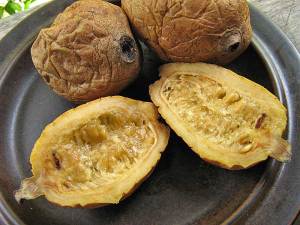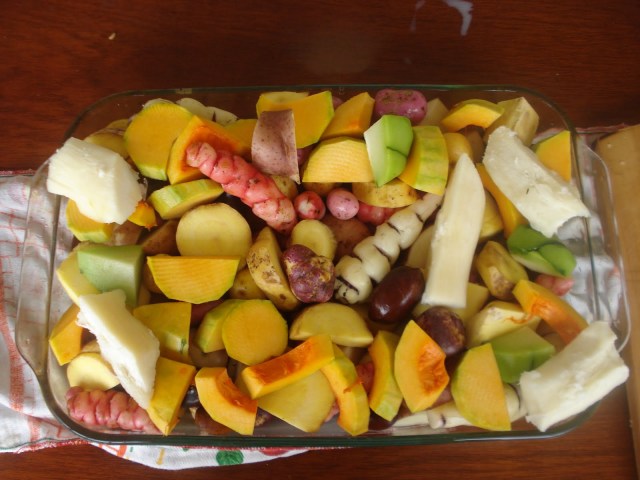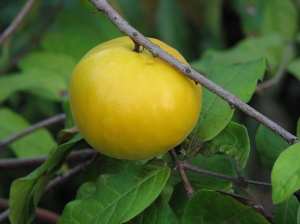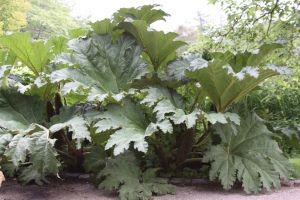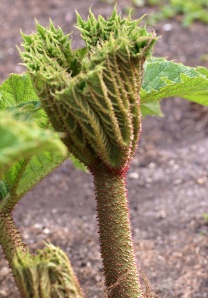 Holluco is a traditional staple food crop grown northern Argentina to Venezuela at elevations between 2,400 and 4,200 metres. As one of the “lost crops” used by the Incas it is still grown and eaten today, mainly by subsistence farmers. It is largely unknown outside South America. Ulluco was probably brought into cultivation from the wild in the central Andes of Peru and Bolivia in about 5500 BC. Botanical material from several coastal Peruvian archaeological sites has been identified as containing starch grains, vessels and xylem of ulluco. Illustrations of ulluco have been found on wooden vessels, ceramic urns and sculptures from the same region, which are dated from about 2,250 – 2,050 BC. The Incas cultivated a wide variety of root crops including ulluco, which became less important as they were forced to grow European vegetables after the Spanish invasion in 1531.
Holluco is a traditional staple food crop grown northern Argentina to Venezuela at elevations between 2,400 and 4,200 metres. As one of the “lost crops” used by the Incas it is still grown and eaten today, mainly by subsistence farmers. It is largely unknown outside South America. Ulluco was probably brought into cultivation from the wild in the central Andes of Peru and Bolivia in about 5500 BC. Botanical material from several coastal Peruvian archaeological sites has been identified as containing starch grains, vessels and xylem of ulluco. Illustrations of ulluco have been found on wooden vessels, ceramic urns and sculptures from the same region, which are dated from about 2,250 – 2,050 BC. The Incas cultivated a wide variety of root crops including ulluco, which became less important as they were forced to grow European vegetables after the Spanish invasion in 1531.
 Ulluco is a compact, potato-like herbaceous annual crop which produces below ground auxiliary stolons which enlarge to form terminal starchy tubers. The tubers are smooth and spherical with waxy skins, between 2-10 cm across, or curved and elongate, and between 2-15 cm long. A wide range of bright skin colours is produced both between and within cultivars, including white, yellow, orange, red, magenta, or green. Tubers may also be spotted or even candy striped. In South America ulluco are most often boiled, shredded, grated, mashed, pickled, mixed with hot sauces, or used to thicken soups and stews with meat and other vegetables. They are used in a number of traditional dishes including soups in Ecuador, olluquito con charqui (with meat) in Peru, and ají de papalisas (with peppers) in Bolivia. Contemporary dishes incorporate cooked ulluco tubers in salads, and the leaves are also eaten in soups and salads. Cooked ulluco tubers have been reported as having a smooth texture and a slight earthy taste, and others describe the flavour as mucilaginous and similar to okra. Some cultivars contain mucilage which can be removed by soaking or preboiling before cooking.
Ulluco is a compact, potato-like herbaceous annual crop which produces below ground auxiliary stolons which enlarge to form terminal starchy tubers. The tubers are smooth and spherical with waxy skins, between 2-10 cm across, or curved and elongate, and between 2-15 cm long. A wide range of bright skin colours is produced both between and within cultivars, including white, yellow, orange, red, magenta, or green. Tubers may also be spotted or even candy striped. In South America ulluco are most often boiled, shredded, grated, mashed, pickled, mixed with hot sauces, or used to thicken soups and stews with meat and other vegetables. They are used in a number of traditional dishes including soups in Ecuador, olluquito con charqui (with meat) in Peru, and ají de papalisas (with peppers) in Bolivia. Contemporary dishes incorporate cooked ulluco tubers in salads, and the leaves are also eaten in soups and salads. Cooked ulluco tubers have been reported as having a smooth texture and a slight earthy taste, and others describe the flavour as mucilaginous and similar to okra. Some cultivars contain mucilage which can be removed by soaking or preboiling before cooking.
 Ulluco have recently been introduced into New Zealand from South America and are being evaluated as a potential new addition to the range of vegetables consumed in this country. This tuber has the potential to be popular with New Zealand consumers. Because of the large variety of colours, they could be sold as a mixed blend rather than as a uniform product. The skin of ulluco tuber is soft and does not need to be peeled before eating. The white to lemon-yellow flesh has a smooth silky texture with a nutty taste. A major appeal of ulluco is its crisp texture, which remains even when cooked. Ulluco tubers are reported to have a long shelf life Some tubers contain high mucilage levels which could be seen as a negative feature because of the resulting gumminess in texture – mucilage is a non-starch polysaccharide so contributes to the total carbohydrate content of the tuber.
Ulluco have recently been introduced into New Zealand from South America and are being evaluated as a potential new addition to the range of vegetables consumed in this country. This tuber has the potential to be popular with New Zealand consumers. Because of the large variety of colours, they could be sold as a mixed blend rather than as a uniform product. The skin of ulluco tuber is soft and does not need to be peeled before eating. The white to lemon-yellow flesh has a smooth silky texture with a nutty taste. A major appeal of ulluco is its crisp texture, which remains even when cooked. Ulluco tubers are reported to have a long shelf life Some tubers contain high mucilage levels which could be seen as a negative feature because of the resulting gumminess in texture – mucilage is a non-starch polysaccharide so contributes to the total carbohydrate content of the tuber.
In South America however ulluco with high mucilage levels are often used to thicken stews. Ulluco tubers with high mucilage content are gummy when raw, but after cooking this characteristic is usually reduced or lost. The mucilage can easily be removed by soaking the tubers in water or parboiling before use. Ulluco tubers are usually cooked whole and take about the same time as potatoes to cook. However, the use of the microwave may reduce this cooking time.
Source: foodscience.wikispaces
 Fanesca Soup
Fanesca Soup
*Galapagos*
Ingredients
2 lbs dried salt cod
6 cups of diced sambo or fresh squash (zucchini), about 2 ½ lbs
6 cups of diced zapallo or squash, about a small sized squash butternut squash
6 small ullucos
2 cups of shredded cabbage
4 cups of cooked and peeled fava beans
4 cups of cooked corn kernels
3 cups of cooked green peas
2 cups of cooked lima beans
2 cups of cooked alubias or cannellini beans
2 cups of chochos or lupini beans, peeled
2 cups of cooked rice
8 tbs butter
1 tsp of achiote
1 cup of diced white onion
1 cup of diced red onion
10 garlic cloves, crushed
1 tbs of ground cumin
1 tbs of dry oregano
1 tsp of ground pepper
2 cups of roasted peanuts
12 cups of milk
1 cup of heavy cream
12 oz of cream cheese
1 cup of feta cheese
½ bunch of cilantro or parsley, finely chopped
Salt to taste
Directions
Soak the salt cod in water for 24 hours, changing the water every 6-8 hours, each time the water should be less and less salty, at the end cut the cod into medium sized pieces. Cook the diced butternut squash and zucchini separately, with a barely enough water to cover them, cook until they are very tender, drain the water and place them in a blender or food make a puree. Boil the shredded cabbage with a small amount of water for about 3 minutes, drain and add the cabbage to the squash puree.
In a large stock pot or soup pot, heat the butter over medium heat to make a refrito or base for the soup, add the onions, garlic, achiote, cumin, oregano and pepper and cook until the onions are tender, about 5 minutes. Add the cooked rice to the refrito and mash it into the refrito with a potato masher to make a thick sauce or puree. Add the squash and cabbage puree and mix well.Add 4 cups of milk and the hullucos, fava beans, corn, green peas, lima beans and cannellini beans, stir in well and let simmer for about 15 minutes, stir frequently to avoid the ingredients from sticking to the bottom of the pan.
Meanwhile bring 6 cups of milk to boil, add the soaked and desalted cod, and boil for about 10 minutes. Add the milk and cod to the soup or if you don’t want the soup to have the strong salted cod flavor then strain the milk and add only the milk to the soup, reserve the fish, fry it in oil until browned on each side and serve on the side or place a piece of the fried cod in each individual soup bowl.
At this point you want to taste the soup and add salt if needed, how much you need will depend on the whether you add the salt cod to the soup or not. Blend the roasted peanuts with 2 cups of milk, add this to the soup, and cook for another 10 minutes, stirring frequently. About 5 to 10 minutes before serving, add the chochos or lupini beans, the heavy cream and the cheeses, stir to help the cheeses dissolve. Add the chopped cilantro or parsley and stir well. Taste and add additional salt and pepper if needed.
Serve with the pieces of fried salt cod (unless they were already added to the soup), hardboiled egg slices, lime marinated white onions, fried ripe plantains, slices of queso fresco, fried cheese empanadas, and Ecuadorian hot sauce or slices of hot peppers. These can be added on top of the soup or on the side.

 Zoom Forage Plants
Zoom Forage Plants




